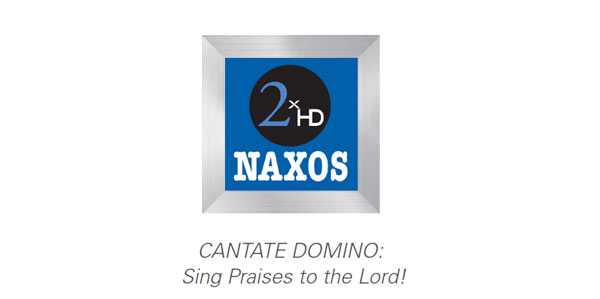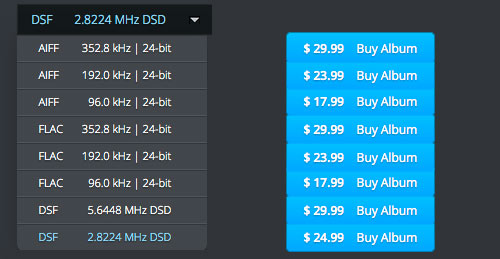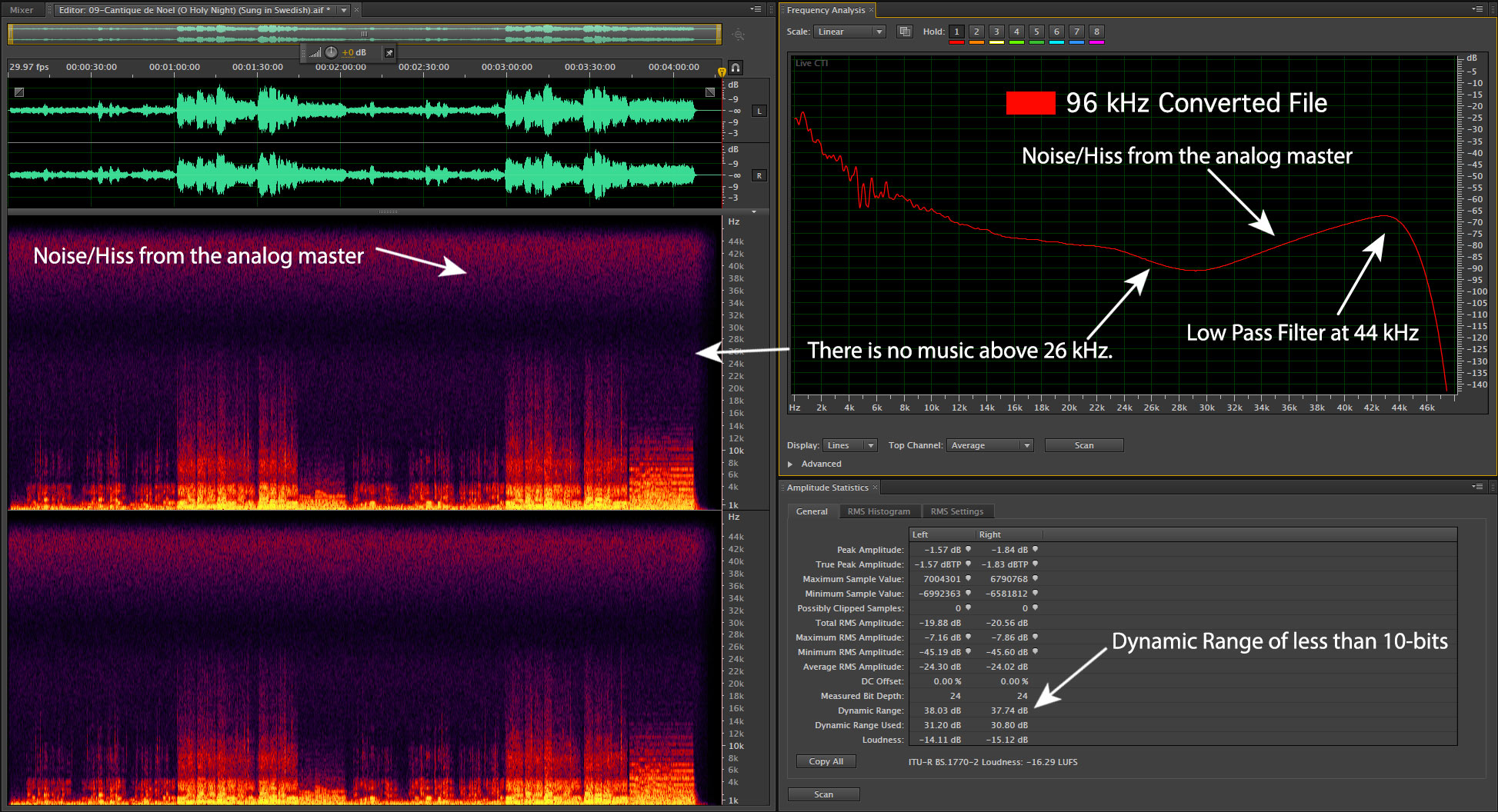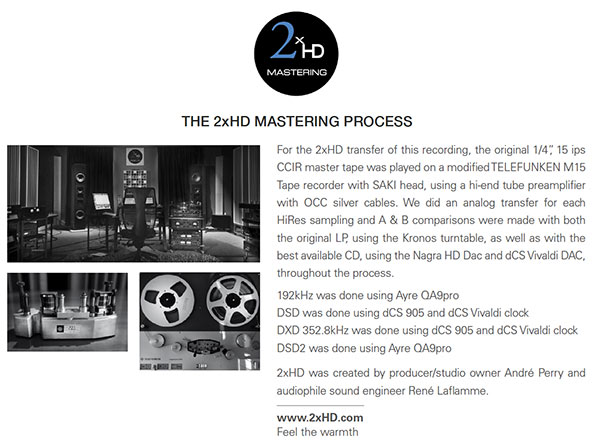Policing Policies and Glass Houses
AIX Records physical discs are distributed by Naxos. Naxos is a very large classical label, aggregator, and distributor of CD, DVD, Blu-rays, and digital media (both streaming and downloads). They do a very good job of labeling the provenance and technical statistics of their own releases. However, they’ve recently gotten some push back from consumers who have analyzed some of their digital content and discovered some upconversions. I wrote about this a few weeks ago in a post called, “Communicating the High-Res Audio Message”. You can check out the post by clicking here.
The purpose of the email was to inform their labels about high-resolution audio (although they called it HD) and insist that everyone make sure that “our labels do not send us up-sampled audio files.” The newsletter also included sections about HD, analog and digital audio, bit depth and sample rate, and definitions for standard and high definition audio. They stated, “We require that the audio be delivered in the bit-depth and sample-rate in which it was recorded and produced. Any sample rate that is used from 44.1 kHz – 192 kHz which also contains a 24 bit depth can be used for HD audio distribution.” They’ve bought into the lowest possible definition of high-resolution audio.
They say they won’t accept upconverted audio from digital sources, but they will allow older analog tapes digitized at high-resolution specs to be labeled as “HD-Audio”. They don’t have a clue about provenance and the limitations of the analog master tapes. How do I know? I purchased a “highly recommended” classical album titled, “Cantate Domino” from HDtracks (along with the new James Taylor album…more on that in a future post) yesterday.
The provenance of this recording is as follows (written by Andrew Quint from The Absolute Sound website):
“Recorded in 1976 by the Swedish label Proprius, Cantate Domino is quite clearly a Christmas album. But for nearly four decades, audiophiles have been happy to employ it as a reference yearlong. This exceptional recording variously features chorus, soprano soloist, organ, and brass ensemble. Timbral balance is even from organ fundamentals up to the Oscar Motet Choir’s high female voices, Marianne Mellnäs’ buttery but focused soprano is realistically scaled, and—most impressively—musical sounds connect seamlessly to the reverberant acoustic of the Stockholm church where the program was recorded with one Revox A77 and a pair of Pearl TC4 microphones.”
This is fine sounding album recorded in the minimalist style. But the original master is not a “High-Res” source. I question how it shows up in the Naxos catalog in a variety of high-resolution containers? On ProStudioMasters site you can purchase the album in 352.8 kHz/24-bit, 192 kHz/24-bit, 96 kHz/24-bit, AIFF, FLAC and 2.8224 MHz, 5.6448 MHz DSD/DSF high-resolution audio formats.”
And EnjoyTheMusic.com was quoted on the ProStudioMasters site:
“…widely regarded as one of the greatest audiophile masterpieces ever recorded … now made even better with this hi-definition release.”
If you want to purchase this analog recording in “faux” high-res, it’s going to set you back a few bucks. Here’s the breakdown:
Figure 1 – The pricing structure of ProStudioMasters.com for a standard-resolution audio tape from 1976 in various formats.
Lest anyone think this recording has any sonic information worthy of 352.8 kHz sampling rate or even 16-bits of dynamic range, here’s the spectrograph of a typical tune from the album:
Figure 2 – The spectra of the “Contique de Noel”. [Click to enlarge]
This is a decent analog recording NOT a high-resolution masterpiece of audio engineering. There is no musical sound above 26 kHz, so buying a format with higher than 96 kHz sample rate is a waste of money. In fact, a good CD version would be as good as any of the expensive downloads. The noise and hiss reduces the dynamic range of well less than 10-bits (37 dB!) and they’ve applied a steep Low Pass Filter at 44 kHz. I have to wonder what you would see if you purchased the 192 kHz version…where would they put the corner frequency of the filter then?
Who’s doing quality control on these products? Purchasers are buying an expensive container of nothing when they choose anything higher than 96 kHz /24-bits…and that’s being generous.
Here’s the page from the PDF booklet that discusses the mastering by 2xHD.
Figure 3 – The 2xHD mastering notes.
I find it ironic that the engineers and staff at Naxos chose to alert all of their distributed labels about the issue of upconversion and the realities of high-definition audio in the digital domain. But they get it completely wrong when the guys at 2xHD put forth a product that doesn’t even come close to meeting high-resolution specifications…other than the specifications of the delivery container. Yes, they have great equipment and a very impressive studio but they can’t improve the sonics of the original Revox tape…and I’m sure the master is a copy of the session master. They can do new transfers into 352.8 kHz/24-bit AIFF files and charge $30 dollars and not have any trouble with the Naxos folks.





I think it is absurd that they played a 40 year old reel of tape over and over again for each digital format. My 40 year old reel of tapes held up well but I only wanted to play then once when I digitized them to minimize the risk to the tape. It does not matter if I will ever play them again, I want to be able to get the most out of them if i choose to.
The custom 2xHD mastering process is nonsense and Naxos should know better. I know the CEO and will write a letter to him and his digital content manager.
“I find it ironic that the engineers and staff at Naxos chose to alert all of their distributed labels about the issue of upconversion and the realities of high-definition audio in the digital domain. But they get it completely wrong when the guys at 2xHD put forth a product that doesn’t even come close to meeting high-resolution specifications…”
Mark, I think you missed the point of the Naxos newsletter. They didn’t issue the advice because they have standards, they did it because CUSTOMERS COMPLAINED. Those same customers won’t be complaining about analog reissues at 32/384, because they think analog is just so wonderful, ooh the pinnacle, what digital is gradually getting closer to as an ultimate goal. Naxos got it *completely right*, because they are aligning their product with customer demands. Standards, schmandards.
You’re right they got complaints and they don’t want complaints. I will write to Naxos and see if they are interested in responding. I know the people there.
P.S. Sorry if that depresses you. It depresses me too. Welcome. 🙂
“They say they won’t accept upconverted audio from digital sources, but they will allow older analog tapes digitized at high-resolution specs to be labeled as “HD-Audio”
We know it’s wrong but they’re just doing the same thing that everyone else in HDA is doing today, They are appeasing the analog crowd by allowing anything recorded on analog tape to be AD converted at any depth/rate and call it HDA as long as it’s 24/44 or better. They’re all too afraid of the analog community to stand up to them and tell them that analog tape IS NOT HD. And since there’s never been any minimal standards for the analog recording used to make the AD conversion even the oldest, worst sounding tape recording qualifies to become a HDA release.
Yea, it’s rediculous. 🙁
This is has become standard operating procedure in the emerging world of high-resolution audio.
Once again, Doctor you have hit another home run in your daily post. I find your continuing classroom series to be of tremendous value. Although, I am now suspicious of all HD music. I am slowly learning the differences
and it is quiet the eye opener. In the meantime, I guess all the so-called “High Definition” music lends another
definition to “The X-Files”.
Thank You for taking the time and efforts to teach those who want to learn the “truth”.
You should be suspicious of all high-resolution audio. The thing we all want and deserve is honestly, openness, provenance, and transfers of the best sources for a reasonable price.
I look forward to your comments on the new JT release to see if it s really wat they claim in terms of audio quality.
Joe, a quick look and listen…it’s really good. I’m going to be talking to the producer/engineer this weekend. Dave O’Donnell is a great engineer and friend.
Once again, extensive factual descriptions are used to avoid the simple statement that up-sampling has taken place.
We need a logo stating whether content has been up-sampled or stating the resolution of the master.
Julian, when a new transfer is done of an analog tape it is not up-sampling. There’s simply digitization at a certain specification level. The provenance concept clears this up.
My first CD player was the early B226 Studer Revox in the 80’s which cost $1200 at the time (a lot even now). I swung a deal on trade-in stuff and got it for $800. It was built like a tank, and had impeccable audio sound. Twenty five years later I sold that relic for $300 on Ebay. SACD convinced me to (the start of the upsampling scam era), and even then I hated to part with it and regret it even today. So I can attest to the recording of any piece of music on a Revox as being the best for it’s day, but any upsampling today is overkill indeed. Thanks for keeping them honest.